Understanding Feather Plucking in Pet Birds
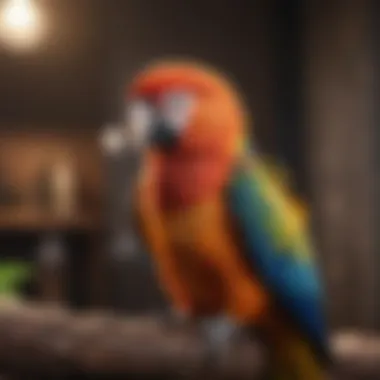
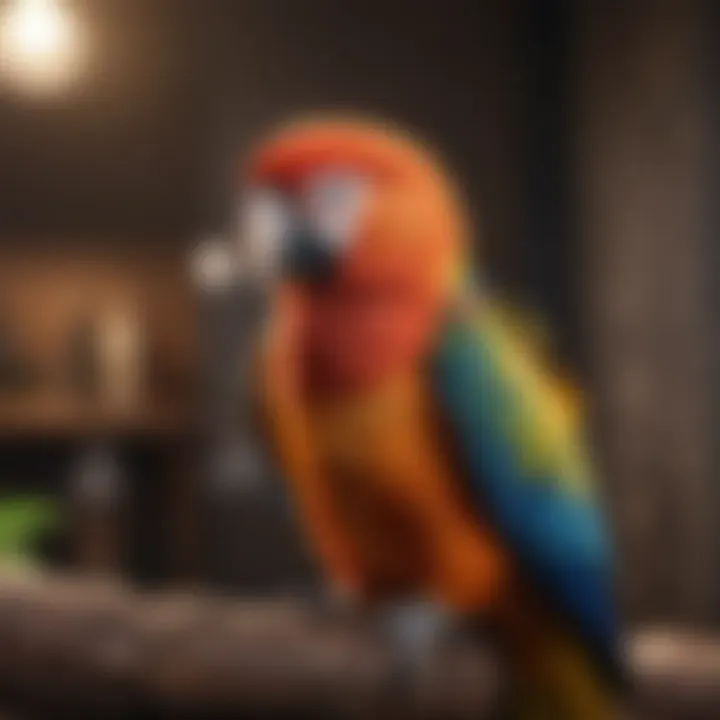
Intro
When you observe your feathered friend, every chirp and shuffle can tell a story. The bond between pet birds and their owners is often as intricate as the patterns of their feathers. However, the joy of bird companionship can sometimes be overshadowed by troubling behaviors, most notably feather plucking. This complex behavior raises a host of questions about the underlying causes and possible solutions.
Feather plucking isn't just a superficial issue; it reflects deeper emotional and physical challenges that a pet bird might encounter. Understanding the reasons behind this behavior isn’t just about restoring beauty to their plumage; it's essential to promote their health and well-being.
In this article, we will dig into several aspects, from daily care routines that prevent such issues to deeper behavioral insights and nutritional guides that recognize the unique needs of different species. By doing so, we hope to equip bird owners with the tools and knowledge necessary to create a nurturing and enriching environment.
Care Tips
Taking care of a pet bird involves more than just providing food and water. It’s about crafting a meticulous daily routine that ensures their physical and mental needs are met.
Daily Care Routines
Every bird has its own personality and preferences. Establishing a consistent routine can provide a sense of stability, which is vital for their well-being. For instance, feeding your bird at the same time each day can establish a predictable environment.
Cage Setup and Maintenance
A well-organized cage is indispensable. It should offer enough space, perches of varying sizes, and hiding spots where birds can feel secure. Regular cleaning is necessary not only for hygiene but also to prevent the buildup of harmful bacteria. Don’t forget to rotate toys and perches frequently to keep their environment stimulating.
Hygiene and Cleaning Practices
Cleaning bird cages is crucial, as droppings can quickly accumulate. An easy approach is to place a layer of paper at the bottom of the cage, making it easy to clean up messes. Ensure all toys are safe and sanitized to prevent any health risks.
Seasonal Care Adjustments
Birds may require changes in care as seasons shift. For instance, during winter, they may need additional warmth, while summer might require extra hydration. Observing your pet's behavior during different seasons can provide important clues about their comfort.
Behavioral Insights
Understanding a bird’s behavior is as essential as physical care. Bird body language tells a lot about how they're feeling.
Understanding Bird Body Language
Birds express their emotions through body language. For example, a bird that ruffles its feathers might be feeling threatened, while a bird bobbing its head could be asking for attention. Learning these signs can help you respond appropriately.
Common Behavioral Issues and Solutions
Some issues stem from boredom or stress. If a bird is plucking its feathers, it might feel neglected or anxious. Providing enrichment and social interaction is crucial. If problems persist, consulting an avian vet can offer tailored solutions.
Positive Reinforcement Techniques
Positive reinforcement can be effective in managing behaviors. Rewarding your bird with treats or praise when they exhibit desirable behaviors can encourage them to repeat those actions. Establishing a bond based on trust is vital.
Social Interaction Needs
Birds are social creatures. Ensuring they have adequate social interaction—whether with humans or other birds—is key. Loneliness can lead to destructive behaviors, including feather plucking.
Nutrition Guides
Nutrition plays a colossal role in a bird's behavior and health.
Essential Diet Components
A balanced diet includes seeds, pellets, fresh fruits, and vegetables. Each bird species has unique dietary requirements, so it's essential to research what fits your pet best.
Safe and Toxic Foods
While fruits and veggies are great, certain foods like avocados and chocolate are toxic to birds. Familiarize yourself with safe options to avoid health risks.
Supplements and Treats
Incorporating vitamin supplements can help, especially if your bird has specific health challenges. Treats like millet sprays can be enjoyable but should be given sparingly.
Feeding Strategies for Different Species
Different species have varying needs. For example, while cockatiels may thrive on a high seed diet, parrots usually need more pellets and fresh produce. Tailoring your feeding strategy ensures your bird gets the nutrients they need.
Wellness and Health
Regular health checks and understanding potential concerns are crucial in bird care.
Routine Health Checkups
Establishing a routine checkup with an avian veterinarian can help spot issues before they become major problems. Regular weigh-ins can also provide insights into their well-being.
Identifying Symptoms of Illness
Noticing changes in behavior, such as lethargy or loss of appetite, can indicate health problems. Keeping a keen eye on these signs is vital for early intervention.
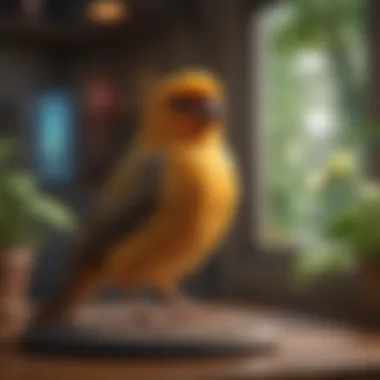
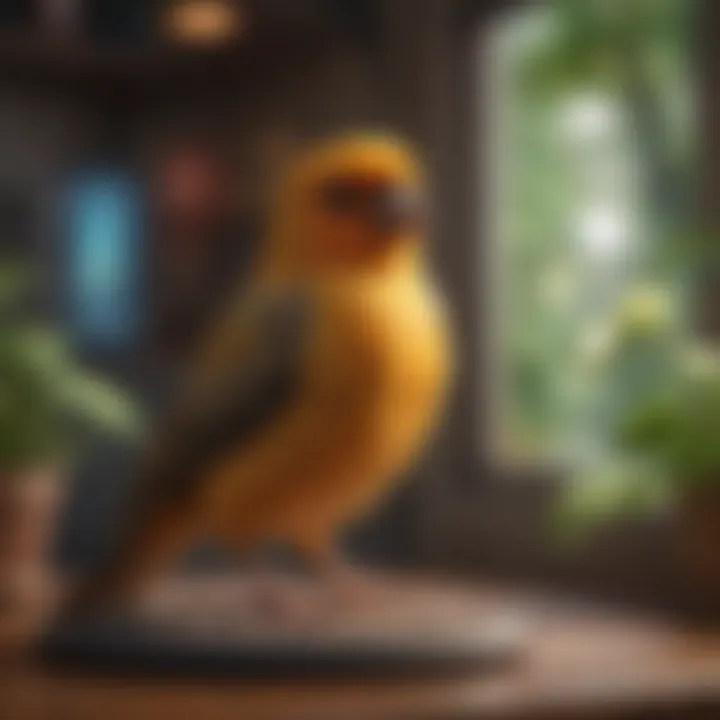
Preventative Care and Vaccinations
Just like with any pet, vaccinations and preventative care can keep your bird healthy. Discuss with your veterinarian the essential vaccinations specific to your bird's species.
Mental and Emotional Well-being
Mental health matters, too. Providing a stimulating environment can prevent loneliness and boredom, which may lead to destructive behaviors.
Enriching Activities
Engagement is key for birds to thrive.
Toys and Playtime Ideas
Investing in a variety of toys can keep birds engaged. Rotate toys regularly to introduce new challenges and prevent monotony.
Training and Tricks
Training your bird to perform tricks not only entertains but also reinforces the bond between pet and owner. Use patience and rewards to encourage learning.
Outdoor Activities and Interaction
Supervised outdoor time can give birds essential exercise and fresh air, which is beneficial for their overall mood and well-being. Just be cautious about potential predators.
DIY Projects for Mental Stimulation
Creating homemade toys or puzzles can also be a cost-effective way to enrich your bird's environment. Consider using safe materials to craft engaging toys.
Ultimately, the journey of caring for a bird extends beyond just feeding and housing; it is about nurturing an enriching and compassionate environment that allows our feathered friends to thrive.
By paying attention to the details of your pet’s care—from their nutrition to their psychological needs—you can foster a happier, healthier, and more vibrant companion.
Foreword to Avian Behavior
Understanding avian behavior is not just an academic exercise; it is central to nurturing a harmonious relationship with pet birds. The way birds act and interact provides deep insight into their needs and emotional states. This section elucidates the importance of grasping these behaviors, which can greatly influence how owners care for their feathered companions.
Small nuances in actions like chirping, flapping, or even the occasional fluffing of feathers can signify much more than mere antics. Often, these behaviors can indicate stress, boredom, or even health issues. By paying attention, owners can anticipate problems before they manifest into serious concerns, such as feather plucking.
Benefits of Understanding Avian Behavior
Recognizing the key elements of avian psychology can transform pet ownership. Here are a few benefits:
- Enhanced Bonding: Knowing what drives a bird's behavior facilitates a strong emotional connection. When owners understand their birds, they can meet their needs, making for a happier household.
- Preventive Care: With a deeper understanding, potential behavioral issues, such as feather plucking, can be spotted and addressed early.
- Stress Reduction: Birds often mirror their environments. A calm, enriched space can foster better behavior and emotional health.
Considerations About Avian Behavior
When delving into avian behavior, a few considerations can help refine your understanding:
- Species-Specific Traits: Not all birds behave alike—what's normal for a cockatiel might be vastly different for a macaw. Owners should tailor their observations accordingly.
- Behavior in Context: The context in which a behavior occurs can shed light on its purpose. Is your bird yelling because of excitement, or is it expressing discomfort?
- Continuous Learning: Bird behavior is as dynamic as the creatures themselves. Keeping abreast of behavioral studies can arm owners with fresh insights and approaches.
"An ounce of prevention is worth a pound of cure"—this adage rings particularly true in avian care. Understanding avian psychology is not merely an option; it is a prerequisite for a fulfilling avian companionship.
The Issue of Feather Plucking
Feather plucking in avian care isn't just a set of peculiar behaviors; it's a wake-up call about the overall health and well-being of our feathered companions. Many pet bird owners can find themselves scratching their heads, wondering why their beautiful parakeets or cockatoos are suddenly turning themselves into featherless wonders. The gravity of this issue cannot be overstated, as it intertwines with various factors, such as their living conditions, emotional states, and even physical health.
Feather plucking is telling us something profound; it's a form of communication from our birds. Instead of dithering about what is considered "normal" behavior, we need to address the underpinnings of this troubling phenomenon. By digging deep into this topic, owners can secure a better grasp on how to prevent, treat, and ultimately understand what plucking says about their pet birds.
Defining Feather Plucking
Feather plucking refers to the compulsive behavior where birds remove their own feathers. This is not simply a case of grooming gone awry; it’s often indicative of stress, discomfort, or health issues. The phrase “feather plucking” can evoke a laundry list of concerns ranging from superficial damage to significant medical conditions. This behavior is not merely cosmetic; it threatens the physical integrity and emotional stability of the birds involved.
It’s essential to distinguish feather plucking from normal molting or preening habits. While molting is a natural process where birds shed and regrow feathers periodically, plucking usually represents an underlying issue that's being expressed through a rather dramatic act. For an owner, recognizing this difference is pivotal; it could be the thin line between a happy, healthy bird and one that’s in distress.
Prevalence in Pet Birds
The phenomenon of feather plucking is not just an odd occurrence; it's prevalent among various species of pet birds, often affecting those kept in less-than-ideal conditions. Statistics indicate that a significant number of pet birds, especially species known for their intelligence and social behaviors, are at risk of developing this compulsion. For instance, lovebirds and African Grey parrots seem particularly susceptible. At least 10% to possibly 30% of these birds might face this issue at some stage in their lives.
Understanding prevalence is crucial as it raises awareness among owners and caregivers about vigilance in monitoring their pets.
Several factors contribute to the high occurrence of feather plucking among pet birds:
- Loneliness: Birds are social creatures. Inadequate interaction can lead to anxiety and subsequent plucking.
- Boredom: A lack of stimulation can cause them to resort to destructive behaviors.
- Health Problems: It's not always psychological; sometimes underlying health issues push them to pluck.
In the end, feather plucking is not just an isolated phenomenon. Raising awareness about its prevalence encourages a more progressive approach in avian care, urging owners to take proactive measures toward the emotional and physical well-being of their birds.
Causes of Feather Plucking
Understanding the causes of feather plucking in pet birds is vital for a number of reasons. This behavior often indicates underlying issues that can impact a bird's health physically and emotionally. As pet bird owners delve into the intricacies of avian life, recognizing the varied triggers for feather plucking can empower them to intervene effectively. This section outlines three major categories of causes: environmental factors, psychological triggers, and health-related issues, each bearing its own significance in a bird’s well-being.
Environmental Factors
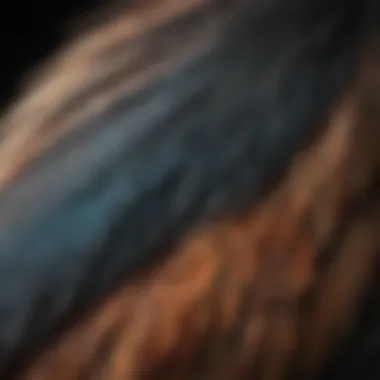
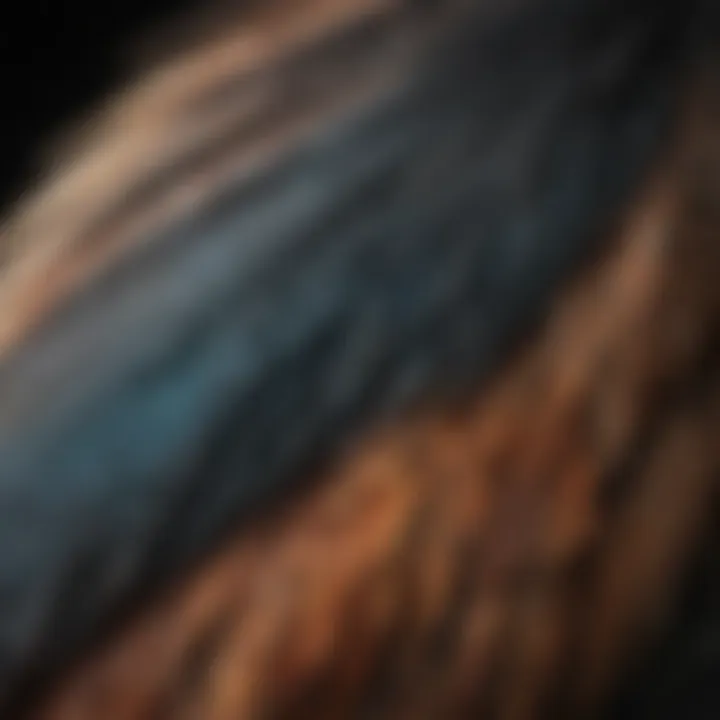
Environmental factors can deeply influence a bird's behavior. Birds, much like humans, thrive in environments that are stimulating and safe. An under-stimulated bird may express its discomfort through feather plucking. Things like:
- Cage Size and Setup: A cramped living space with limited room to move can lead to frustration. Birds need space not just to stretch their wings but also to engage in exploration.
- Noise Levels: Excessive noise, whether it’s from nearby traffic, loud television, or screaming children, can create anxiety for birds. They are adept at picking up on their surroundings, and constant noise may drive some to pluck their feathers.
- Temperature and Lighting: Birds require proper temperature regulation and a natural light cycle. If the environment feels too hot, too cold, or lacks sufficient natural light, their comfort levels can dwindle, encouraging them to resort to plucking as a coping mechanism.
Setting up an enriching habitat that provides plenty of toys and interaction can help curb these instances.
Psychological Triggers
Diving deeper into a bird's psychological state reveals a complex world of emotional needs. Birds are social creatures that crave interaction. Factors influencing stressed or anxious states include:
- Loneliness: Birds that are kept alone for prolonged periods may feel isolated. This solitary existence can lead them to develop harmful habits like plucking.
- Boredom: When there’s not enough engagement, birds may turn to plucking out of sheer lack of stimulation. Introducing new toys and changing up their environment can make a significant difference.
- Change in Routine: Birds are creatures of habit. Any sudden changes, whether it's a new member in the household or moving to a different location, can cause considerable stress, pushing them toward plucking behaviors.
Key takeaway: Understanding your pet’s emotional wellbeing can't be overstated, and paying attention to their behavioral cues is crucial.
Health-Related Issues
It's essential to recognize that sometimes, the root cause of feather plucking can be tied to health concerns. Birds may pluck feathers as a response to distress caused by medical issues such as:
- Skin Conditions: Allergies, mites, or other skin irritations may prompt excessive preening and ultimately lead to feather loss.
- Infections: Bacterial or fungal infections can create itchiness and discomfort, driving birds to pluck feathers.
- Pain: Sometimes, hidden pain or discomfort from internal conditions can lead to self-mutilation behaviors. Owners should stay vigilant about sudden changes in their bird’s behavior, as these could indicate underlying health issues.
Incorporating regular visits to an avian veterinarian can help catch any health-related problems early, ensuring your feathered friend remains in tip-top shape.
The well-being of pet birds hinges on the interplay of environmental, psychological, and health-related factors. Addressing these causes can lead to more effective management of feather plucking and enhance the quality of life for these cherished companions.
Understanding the multiple facets of feather plucking allows bird owners to take a more generous approach toward prevention and intervention. Each layer presents an opportunity for growth and healing, ensuring that pet birds live healthy and fulfilling lives.
Implications of Feather Plucking
Feather plucking, while often dismissed as a mere nuisance, presents substantial implications that resonate deeply with both the health of birds and the psychology of their owners. Understanding the ramifications of this behavior is not just an academic exercise; it's crucial for promoting responsible pet ownership and ensuring that our feathered companions thrive in a human-controlled environment. The implications touch upon physical, emotional, and social aspects, and recognizing them allows us to address this complex behavior more effectively.
Physical Consequences for Birds
The act of feather plucking is far from a harmless habit. It can lead to significant physical problems for birds that extend beyond the loss of feathers. When birds engage in this behavior, they often cause injury to their skin, leading to possible infections and complications. In some cases, plucking can create open wounds that open the door for parasites or bacterial infections to take hold.
Here are some key physical consequences:
- Skin Infections: Constant plucking can leave the skin raw and prone to infections, requiring medical intervention.
- Nutritional Deficiencies: Feather picking can indicate underlying stress or poor nutrition, potentially leading to other health issues.
- Feather Regrowth Problems: After plucking, feathers may not grow back properly, resulting in malformations or a lack of insulation, which can affect the bird's overall health.
- Increased Stress Hormones: The physical act of plucking can lead to elevated stress levels, which negatively impacts the bird’s immune system.
Caring for birds with feather plucking tendencies requires vigilant observation and proactive health measures. Owners should seek veterinary guidance, particularly if they notice signs of distress alongside plucking, since the situation can escalate quickly.
Emotional and Social Effects
The emotional fallout from feather plucking is equally concerning, affecting both the birds and their human companions. Birds are inherently social creatures; they thrive on interaction and stimulation. Hence, the act of plucking may reflect issues related to their emotional well-being.
Here are some insights into emotional and social effects:
- Isolation and Loneliness: Birds that pluck may often be those that lack social interaction. Without adequate companionship, they may resort to plucking as a way to cope, essentially turning their frustration inward.
- Frustration and Anxiety: Plucking can be a symptom of anxiety. A bird may feel trapped or stressed in its environment, leading to behavioral issues. This is why modification of the living space can be a game-changer.
- Disruption of Human-Bird Bond: For pet owners, witnessing their cherished avian companions pluck can lead to feelings of guilt and helplessness, potentially straining the owner-bird relationship.
- Impacts on Human Mental Health: The anxiety experienced by birds can translate into stress for their owners, creating a cycle of distress that affects both parties.
By understanding the emotional dimension of feather plucking, bird owners can adopt more effective strategies for management. It’s essential to foster an enriching environment where birds feel secure and loved, which might mitigate the urge to pluck. As we deepen our empathy for these remarkable creatures, we become better equipped to support their needs.
Effective Strategies for Prevention
Preventing feather plucking in pet birds takes precedence when one considers avian welfare. A well-rounded approach involves creating an enriching environment and ensuring social interaction. These strategies address the root causes of plucking while optimizing the overall well-being of feathered companions. Avian owners need to pay close attention to several specific elements, as the benefits of prevention extend to both the physical and emotional health of the birds.
Creating an Enriching Environment
Creating an engaging habitat is key to keeping a bird’s spirits high. Birds thrive in settings that stimulate their natural behaviors. When considering environment, think of:
- Variety of Toys: Rotate toys to keep the bird curious. Chewable items are especially important as they provide mental engagement.
- Safe Spaces for Foraging: Setting up areas where birds can search for treats makes them work for their food, lending fulfillment and satisfaction.
- Climbing Structures: Birds are instinctual climbers. Perches of various sizes and materials give them the chance to exercise and explore, leading to less angst and plucking.
- Natural Light: Birds need exposure to sunlight. A well-lit area boosts mood and promotes natural rhythms, which can mitigate stress.
Implementing these measures fosters a sense of security and stability. It’s a bit like setting the stage for a grand performance—when the backdrop is vibrant and diverse, the actors (or birds, in this case) are less likely to feel trapped or bored. An engaged bird is a happy bird.
Providing Social Interaction
Birds are inherently social creatures. Isolation can lead to myriad problems, including feather plucking. Ensuring proper social interaction can be as simple as:
- Quality Time: Spending time talking or playing with your bird daily helps them feel valued. Familiar voices can be soothing.
- Bonding with Other Birds: If you have multiple birds, let them interact. They will engage in natural social behaviors, reducing loneliness.
- Positive Reinforcement: Praise and treats for good behavior during social interactions can strengthen your bond while improving the bird's confidence.
The importance of a companion cannot be overstated. Just like humans, birds benefit from community. When birds perceive that their needs for companionship are met, they exhibit fewer negative behaviors, including plucking.
"A happy bird is a healthy bird; it starts with a joyful environment and nurturing interactions."
By focusing on these strategies and recognizing the unique needs of different bird species, owners can create conditions that limit the likelihood of feather plucking. Taking these steps ensures not only the prevention of plucking but also the overall happiness and longevity of our beloved avian friends.
Interventions for Plucking Behavior
The topic of interventions for plucking behavior in pet birds cannot be overstated. Feather plucking is more than just a cosmetic issue; it echoes deeper emotional and health-related problems. Addressing this behavior efficiently contributes to an avian companion's overall well-being. Failing to intervene may lead to severe physical harm or acute distress for the bird, making it imperative for bird owners to be proactive. Interventions play a crucial role in not only mitigting the immediate symptoms but also in instilling long-lasting behavioral changes that benefit both the bird and its caregiver.
There are various strategies and techniques that owners can adopt in this regard. Implementing these interventions requires keen observation and a tailored approach, recognizing that each bird’s needs vary.
Behavioral Modification Techniques
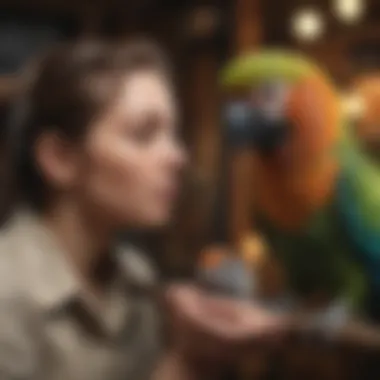
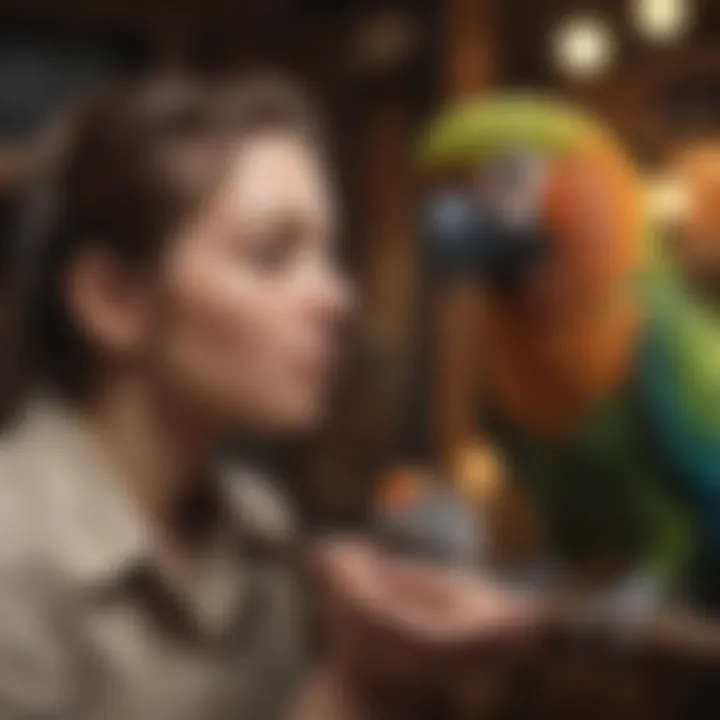
Behavioral modification techniques are essential in addressing plucking behavior effectively. These methods focus on rerouting a bird's negative habits through positive reinforcement or redirection practices.
- Positive Reinforcement: This involves rewarding the bird for desirable behaviors, effectively making good actions more appealing than plucking. For example, when the bird engages in play with toys rather than indulging in feather plucking, a small treat or verbal praise can encourage continuity of this behavior.
- Redirection: It's possible to redirect a bird's energy towards activities that engage its mind and body. Providing an array of toys or stimulating environments can keep a bird occupied. Introducing foraging opportunities can engage their instinctive behaviors, which can significantly reduce stress and anxiety.
- Desensitization: Sometimes, addressing the triggers that provoke plucking behavior is crucial. If a bird plucks in response to a specific stimulus, gradually exposing it to this trigger in a controlled and supportive environment may help the bird acclimatize to that stimulus without resorting to destructive behavior.
This can be a lengthy process requiring patience, but these techniques can lead to positive and sustainable behavior changes. Incorporating consistency in applying these methods is vital for success.
Consulting Avian Veterinarians
Avian veterinarians play an undeniably crucial role in the effort to mitigate feather plucking among pet birds. Consulting a professional should not just be a last resort but rather a fundamental part of the care process for any bird owner. They can provide insight into both medical and behavioral aspects, ensuring a holistic approach to the problem.
- Health Assessment: An avian vet can conduct thorough examinations to rule out underlying health issues that may contribute to plucking. This might include checking for skin infections, allergies, or nutritional deficiencies.
- Behavioral Guidance: In addition to medical diagnosis, these professionals can offer tailored guidance and strategies that suit the specific bird. Their expertise can recommend evidence-based behavioral treatments and modifications.
- Medication if Necessary: In some severe cases, medication may be warranted to manage anxiety or compulsive behaviors. An avian veterinarian can help determine the right course of action and monitor the bird's progress through any treatments undertaken.
Don't overlook the importance of professional advice; the insights from an avian veterinarian can make a significant difference in overcoming plucking behavior.
Long-Term Solutions and Follow-Up
Addressing feather plucking in pet birds is not merely an initial effort but rather a sustained commitment. Long-term solutions entail creating strategies that help mitigate this behavior over time. This phase of care includes consistent monitoring and reassessing the practices that surround the avian environment and well-being. A robust framework for ongoing evaluation promotes a healthy relationship between owner and bird, ultimately resulting in better feathered friends.
Monitoring Progress
Monitoring a bird's behavior isn’t just about keeping an eye on their feathers. It’s an ongoing process that requires diligence and observation. Owners should maintain detailed records of their pet's daily habits—including food intake, playtime, and any unusual behaviors. This data can help spotlight trends, showing if stress levels rise or fall in relation to environmental changes.
Some proactive steps for effective monitoring include:
- Regular Journaling: Documenting notable behavior patterns every day.
- Photography: Taking regular photos to track changes in plumage or overall appearance.
- Behavioral Checklists: Keeping a checklist that includes normal behaviors versus those that indicate distress.
"Monitoring is like looking through a window; it provides a clearer view of what goes on within a creature’s world."
Having this information handy aids not just the owner, but also any veterinary professionals consulted later. If nothing else, it marks the time as valuable; every observation is a stepping stone to understanding how to integrate further interventions.
Reassessing Care Practices
As time passes, the dynamics of any household can shift. Whether it’s a new family member, a change in routine, or even environmental factors, it's crucial for pet owners to reassess their care practices continually. What worked initially may not be sufficient later on. This reassessment doesn’t imply failure, rather it's about optimizing the care provided.
A recomposed approach might include:
- Environmental Audit: Evaluating the living space for potential stressors (like loud noises or inadequate enrichment).
- Social Interaction Review: Ensuring that the bird receives quality time and attention, which is vital for emotional health.
- Health Check-ups: Scheduling periodic visits to an avian veterinarian to rule out any health-related factors influencing behavior.
It's advised to remain flexible in adapting care practices accordingly. Regularly discussing composite findings with others who care for the bird can also open up new avenues for change. Ask questions such as:
- Is the bird reacting positively or negatively to recent adjustments?
- Are the prescribed interventions making a noticeable difference?
- What additional resources or support can I utilize to ensure my bird’s well-being?
The Role of Education in Avian Care
Education plays a crucial role in the proper care of pet birds, especially when it comes to understanding their behaviors and needs. A well-informed bird owner is in a better position to avoid issues such as feather plucking. Knowledge not only empowers owners but also enriches the lives of their avian companions. The more you know about bird behavior, health, and environment, the better you can create a supportive setting that promotes wellness and happiness.
One key aspect of education in avian care is the acknowledgement that birds are sensitive creatures, both physically and emotionally. For instance, a bird’s environment must be stimulating enough to prevent boredom, a classic trigger for harmful behaviors like feather plucking. Owners who understand these dynamics can take proactive steps rather than merely reacting to problems as they arise.
Educating oneself goes beyond just reading about birds; it encompasses sharing knowledge with others, participating in community discussions, and engaging with avian professionals. This collaborative spirit can lead to better practices in avian care.
Knowledge truly is power, especially in the world of avian care. A small investment of time in learning can yield substantial benefits for both the bird and its owner.
Understanding Bird Behavior
Understanding bird behavior is fundamental in tackling issues related to feather plucking. Different species have distinct needs and temperaments. For example, cockatiels are known for their social nature, often seeking out interaction, while a species like the African Grey may require more mental stimulation due to its high intelligence.
Recognizing the signs of distress or unhappiness in birds is vital. This could include changes in vocalization, unusual aggression, or even a refusal to engage with toys or humans. These behaviors can signal the onset of feather plucking or other issues. Knowledge of such behavioral patterns can enable owners to act swiftly and efficiently, fostering a more harmonious relationship with their pets.
Resources for Bird Enthusiasts
To further bolster one's understanding of bird behavior and care, several valuable resources are available.
- Books and Guides:
Titles like "The Parrot Problem Solver" by Michael Sazhin delve into behavioral issues comprehensively, offering insights and solutions to common challenges. - Websites and Online Communities:
Sites such as Wikipedia and Britannica provide broad overviews of avian species and their care. Online forums on platforms like Reddit serve as excellent venues for exchanging experiences and solutions with other bird owners. - Local Avian Associations:
Many communities have avian clubs or societies that host educational workshops and seminars. Engaging with these groups not only enhances knowledge but also fosters friendships with like-minded people. - Veterinarian Resources:
Consulting with avian veterinarians can provide specialized knowledge, especially concerning health-related issues that may manifest in behaviors like feather plucking.
Navigating the world of avian care requires a commitment to continuous learning. By tapping into these resources and building an understanding of bird behavior, pet owners can improve not just their skills but also the lives of their cherished feathered companions.
Epilogue
In wrapping up the discussion surrounding feather plucking in pet birds, it’s essential to establish its significance not only in the realm of avian care but also in the broader context of responsible pet ownership. Feather plucking is not merely a trivial inconvenience; rather, it reveals deeper issues affecting a bird's well-being. This behavior can be multifaceted, stemming from environmental, psychological, and physical conditions that need to be effectively understood and addressed.
Understanding the dynamics of feather plucking helps owners recognize the critical signs of distress in their avian companions. Successful intervention often hinges on a comprehensive understanding of a bird’s specific triggers. By being aware of these triggers, bird owners can actively shape a conducive environment that encourages health and happiness.
This article emphasizes the necessity of formulating tailored strategies for each unique parrot or budgie under care. Addressing feather plucking doesn't just enhance the individual bird's quality of life; it also enriches the bond between the owner and the pet. Moreover, creating enriching habitats and fostering social interactions can often prevent these behaviors from developing.
Summary of Key Points
- Feather plucking is a complex issue stemming from various factors, requiring a multifaceted approach to treatment.
- Environmental enrichment and psychological well-being are crucial in preventing this behavior.
- Owners should educate themselves and continuously refine their care practices in line with their pet's needs.
Call for Responsible Bird Ownership
Ultimately, the call for responsible bird ownership rings louder than ever when discussing feather plucking. Owning a pet bird is not akin to a casual fling; it's a commitment that demands awareness, education, and diligence. Potential bird owners must consider the implications of bringing a bird into their lives, ensuring they are prepared to meet all its needs, emotionally and environmentally.
Each bird is an individual with its own set of needs. Hence, ongoing education about avian behavior creates a foundation for effective communication and a positive relationship with these creatures.
Professional guidance from avian veterinarians should not be overlooked. These professionals can provide tailored strategies that align with the specific circumstances of feather plucking in each bird. Through sheer commitment to responsible ownership and a willingness to adapt, we foster an environment in which our feathered friends can thrive.
"A happy bird is a healthy bird. Understanding their needs goes beyond feeding and housing—it requires a dedication to their emotional and social landscapes."















